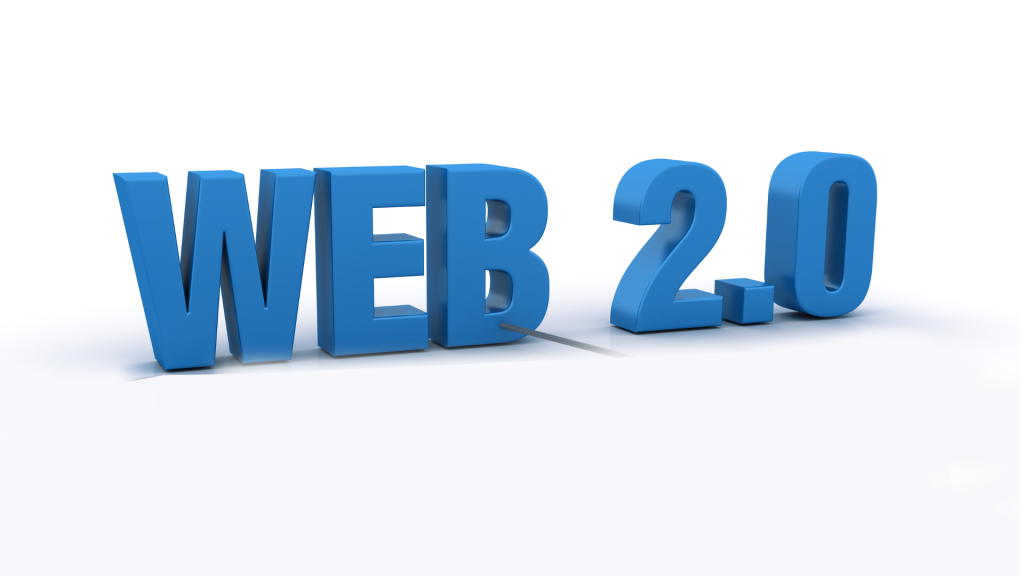Have you ever noticed how billions of websites merge and share content? Well, that’s the magic of Web 2.0 backlinks. It’s behind every website you search for, click on, and browse on your smartphone. Today, the internet is becoming increasingly popular, with social media sites, blogging sites, and video apps.
Search engine optimization (SEO) is a compellingly effective method for increasing visibility of your content on search engines. SEO is there for everything, from visibility to maintaining a helpful client list.
The combination of these two methods will optimize a website’s search ranking based on its relevance to the content. Now, let’s learn some of the exciting things about Web 2.0 backlinks in SEO, and how you can use this strategy to expand your SEO results for desirable future outcomes in 2025 with Google.
What is Web 2.0?
Web 2.0 refers to a second-generation internet, where web space shifted from static, consumed content to user-generated, active content and experiences. During the early days of the web, commonly referred to as Web 1.0, the vast majority of websites were read-only, allowing users to read content but not interact with it.
Think about the simplest web pages that contained a white background, plain black or colored text, and possibly some simple pictures. With the evolution of technologies, Web 2.0 ignited a significant transformation. Instead of being static and read-only, we began to see websites built around dynamic content that encouraged participation, conversation, and sharing of content.
Users were not confined to just reading what the page creator wrote; they could also share, post, comment, and create new content. Web 2.0 gave rise to social and publishing platforms like Facebook, YouTube, Blogger, Medium, and other tools that enabled social and publishing features, designed to create communities and publish conversations online.
What are Web 2.0 Backlinks in SEO?
Before you can even understand how to use Web 2.0 backlinks for SEO, you must briefly appreciate its origins. In Web 1.0, we primarily saw very static sites, read-only websites with limited possibilities for interaction. Web 2.0 brought forward an experience that was more dynamic and user-focused.
Blog posts, wikis, social platforms, and user-generated content are all examples where everyday internet users can contribute, comment, and connect with others. The evolution from Web 1.0 to Web 2.0 significantly changed the way content is generated and shared online. Internet users are no longer passive receivers of information.
They are now interactive, involved, and engaged. Every day, users now write and participate in discussions, share thoughts, review experiences, input, and contribute to the web, build their webpages, and even blogs, as this evolution of the web has made it super collaborative and full of interactive opportunities.
Web 2.0 sites usually have natural, keyword-rich language and a lot of genuine engagement, all of which helps to increase a site’s relevance and credibility. Google’s algorithm favors sites that exhibit activity, authority, and user engagement – all characteristics of the Web 2.0 era.
Key Features of Web 2.0 Platforms
A well-designed SEO strategy can benefit from using Web 2.0 opportunities, but it’s first necessary to understand what Web 2.0 is. These are some of the key elements of an effective Web 2.0 platform:
User-Generated Content
At the heart of Web 2.0 is content created by real users. From blog posts to reviews and forum threads, this content drives authenticity and relevance. Search engines love it because it’s unique, regularly updated, and often filled with natural keyword usage.
Interactivity and Engagement
Web 2.0 platforms are built around conversations, not just publishing. The comments, likes, shares, and conversations lead to greater engagement. This interactivity indicates value to search engines and increases time on pages, an important SEO factor.
Examples of Web 2.0 Sites
Countless platforms fall under the Web 2.0 umbrella. Here are a few of the most popular:
- Medium: Great for long-form content
- WordPress: Ideal for custom blog and website creation
- Tumblr: Offers creative flexibility and strong social sharing
- Weebly: A user-friendly website builder with blogging features
These platforms are powerful tools when used strategically in your SEO campaign.
Web 2.0 Link Building Strategy
Once you understand what Web 2.0 can do for your SEO, it’s time to put that knowledge into practice. Here’s how to build Web 2.0 backlinks effectively:
How to Create Web 2.0 Backlinks the Right Way
Start by selecting trusted, high-authority Web 2.0 sites for link building. Create original, engaging content that provides real value, don’t just post for the sake of placing a link. Add contextual links within the content and make sure your anchor texts are varied and natural.

Best Practices for Web 2.0 Link Building
- Use a unique username and branding on each platform
- Always include media (images, videos) to boost quality
- Interlink between your Web 2.0 properties when it makes sense
- Post regularly to keep your pages active and relevant
- Keep your profiles and content updated for long-term results
Avoiding Spammy Tactics
One of the most prominent mistakes marketers make is turning Web 2.0 into a spam playground. Avoid duplicate content, keyword stuffing, or link farms. Google penalizes unnatural patterns and low-quality pages. Focus on building genuine mini-brands with each property.
Why Web 2.0 is Still an Effective SEO Strategy?
Increase Authority and Engagement
Web 2.0 is all about bringing more creativity and sharing power with users. Today, we can see many examples of its websites that have achieved astonishing records in social interaction. These sites have benefited the users and the internet community in two ways.
- Firstly, they offer a fantastic chance for users from anywhere in the world to communicate, converse, and collaborate on any topic that interests them.
- Secondly, it can serve an essential purpose in improving your website’s visibility on search engines.
Faster Indexing
We all know the process of SEO and how it works to rank your website on the internet. The importance of backlinks is also a well-known fact, and we understand how they strengthen the authority and ranking of a website. Web 2.0 also helps you get links that point toward your target website. It increases the chances of frequent indexing through crawling by bots.
Unleash the power of Web 2.0 to share your content for maximum reach and engagement. Improve your business site’s backlink profile to boost your ranking. Moreover, it helps to create Brand awareness and strengthen the authority of your website.
Link Building
Many Web 2.0 platforms allow users to include links within their content. SEO experts often add backlinks to either external sources or the homepage of their website. This tactic helps search engines identify the website due to its authority and relevance to other sites.
Furthermore, users can interlink content between Web 2.0 and other platforms to create a chain of relevant blog posts. This strategy of interlinking improves the SEO of that content on web pages.
Referral Traffic
There is another benefit of Web 2.0 that most common users often overlook. It helps to bring a lot of referral traffic to your website. The content and informative posts that you share through your blogs help attract interested users. They read, appreciate, and share your blog posts with their friends and on social media.
However, your Web 2.0 website is a second source of advertisement for your primary business or services. If you provide engaging content about your core product or services to potential customers, then you’re hitting the bull’s eye. The traffic that comes through following your links and posts on blogging sites is called referral traffic.
Measuring the Success of Your Web 2.0 Backlinks Strategy
Building Web 2.0 backlinks is only half the battle, and we can only determine success through measurement. You can measure success by first tracking performance. Use Google Analytics and Google Search Console to gather data on users doing what you want them to do with your site.
In particular, you will want to look for increases in referral traffic from your Web 2.0 backlinks. If you’re getting new readers from Medium, WordPress, or other platforms, then that’s a good sign for your campaign. You will also want to keep an eye on your search rankings for your targeted keywords.
Backlinks from quality Web 2.0 properties can take some time to show improvements, so patience is key. Engagement metrics, such as bounce rates, time on site, and pages per session, are all critical steps in assessing whether the type of traffic you are sending is the correct one. But most importantly, use the data to refine your strategy.
If specific platforms or content types perform better, double down on them. If others are underperforming, either improve the content or focus your efforts elsewhere.
Quick Checklist for Using Web 2.0 in SEO
Do you want to leverage Web 2.0 to improve your website’s SEO? Just follow this short checklist to make sure you’re right on track:
- Identify high DA Web 2.0 Sites: Find web 2.0 platforms that are high in Domain Authority (DA), like WordPress.com, Medium, Blogger, and Tumblr. High DA web 2.0 sites provide good backlink value.
- Create original, High-quality Content: Write useful and engaging content that showcases your knowledge and provides tangible value to readers. Google loves fresh and helpful information.
- Add Internal and Contextual Backlinks: Insert relevant links to your main website naturally within the content. Don’t force it; keep it relevant to the topic.
- Stay Consistent with Your Posts: Don’t just post once and then forget about it. You will want to maintain and update your Web 2.0 properties consistently to keep them from expiring quickly and making them attractive to Google.
- Track Traffic and Engagement: You can monitor traffic from your Web 2.0 properties using tools like Google Analytics. This will help you see which Web 2.0 properties and/or generators are sending you the best traffic to your site, as well as how users behave once they are on your site.
- Don’t Duplicate the Same Content: Never copy and paste the same article on multiple channels. Always rewrite and repurpose to ensure your page or post has the most uniqueness.
- Only Link where it’s Contextually Relevant: Don’t overload on links. Make sure you keep links relevant to the article’s content flow while adding value and logic for the viewers.
Are Web 2.0 Backlinks Still Effective in 2025?
Web 2.0 backlinks are relevant in 2025, but keep in mind that quality is more important than ever. They can help diversify your link profile and reinforce the authority of your site, particularly if they are relevant and come from well-maintained properties.
It is also important to note that Web 2.0s are not an all-out approach; they must be part of an SEO strategy with high-quality content, technical elements, social signals, white-hat links, etc.
So, just don’t get sucked into making a ton of low-effort Web 2.0s, treat them as real entity or value for each account as a low-target blog or content hub, keep the content relevant, engaging, and helpful to the reader, if they are done right then they will provide long-lasting value for your SEO, but don’t give up on giving them other sources to hold up their rankings.
Final Thoughts
Using Web 2.0 backlinks in SEO is an essential strategy for increasing traffic on search engines. By strategically enhancing content on some of the largest platforms and linking to your website, you broaden your search ranking. This will help increase visitors and eventually help convert them into your very own customers.
Web 2.0 in SEO will help continue to build valuable brand awareness and also play a key role in driving sales of your products and services. Therefore, if you develop long-lasting relationships, create high-value content, and build links naturally, you will benefit your website’s SEO.
Change your internet marketing strategies today to reflect the use of Web 2.0 in SEO. Partner with Integrated IT Solutions to increase website traffic and promote your global brand. Reach out today!
FAQs
How does Web 2.0 enhance the SEO of the website?
You can create and share content related to your niche, connect and interact with others within it, build relationships, and help create links back to your content on various sites, such as blogs, forums, or social media. These links and interactions increase traffic and help with getting backlinks to the site’s profile, which is a significant ranking factor in SEO.
How Does User-Generated Content on Web 2.0 Impact SEO?
User-generated content can play an essential role in your SEO strategy. First, when your users create content that relates to your brand or a particular industry, they add more relevant content about your business website. This creates more content that search engines can rank for, and thus improves your business’s visibility.
What Are Some Best Practices for using participative web in SEO?
To effectively use a participatory web for SEO, create engaging, high-quality content that offers value to users. Get involved in the community and make at least friends with other users, and encourage them to share socially. Make sure to optimize your profiles and content with relevant keywords, and always take the high ground when it comes to ethics in SEO. With others within it, build relationships, and help create links back to your content on various sites, such as blogs, forums, or social media. These links and interactions increase traffic and help with getting backlinks to the site’s profile, which is a significant ranking factor in SEO.





